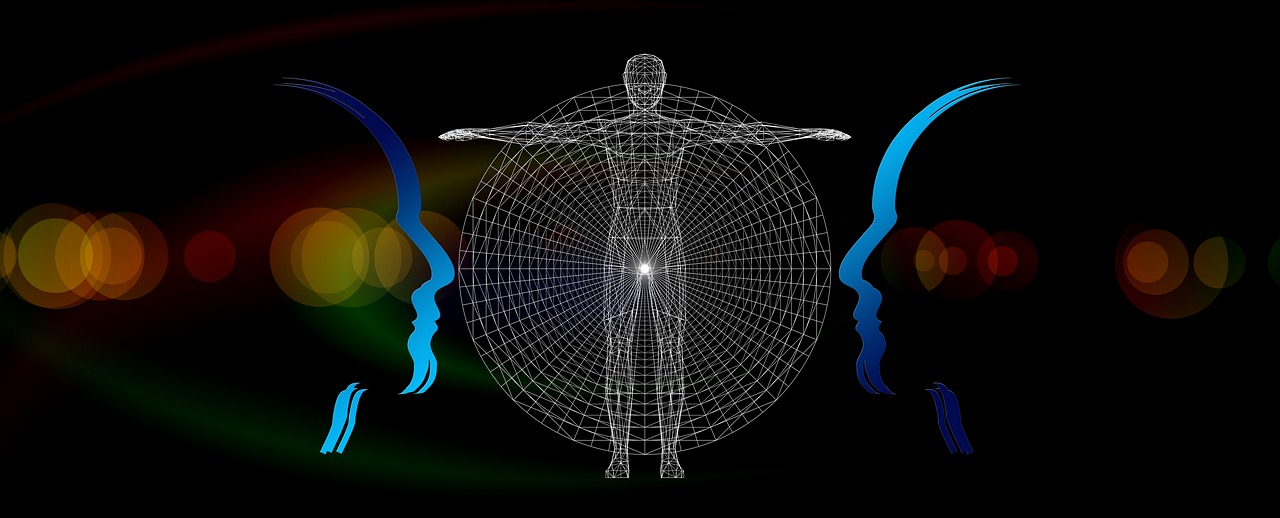Understanding HGH Injections: Benefits, Risks, and UsesUnderstanding HGH Injections: Benefits, Risks, and Uses
Human Growth Hormone (HGH) is a vital hormone produced by the pituitary gland. It plays a key role in growth, metabolism, muscle development, and overall health. While naturally produced by the body, HGH levels decline with age. Some people turn to HGH injections to counter this decline. The details on HGH injections help individuals understand how the therapy works, its potential benefits, and associated risks. Understanding their benefits, risks, and uses is essential before considering therapy.
What Are HGH Injections?
HGH injections are a form of hormone therapy used to supplement the body’s natural growth hormone levels. They are typically administered subcutaneously under medical supervision. The goal is to restore hormone balance and support physiological processes that rely on HGH. Doctors evaluate hormone levels and health history to ensure treatment is appropriate and safe.
Uses of HGH Injections
HGH therapy is used in both children and adults for various medical conditions. In children, it treats growth hormone deficiencies to promote proper growth. In adults, it may address hormone deficiencies that affect metabolism, muscle mass, and bone density. Some individuals also explore HGH for recovery after surgery or injury. While not a replacement for healthy lifestyle habits, it can complement other interventions.
Benefits for Muscle and Fat Metabolism
One of the most recognized benefits of HGH injections is their effect on body composition. HGH helps increase lean muscle mass and reduce fat, particularly around the abdomen. This can enhance physical appearance and improve metabolic health. Men and women with low HGH levels often notice improvements in strength and energy when therapy is combined with exercise and a balanced diet.
Impact on Bone Health and Recovery
HGH supports bone density and strength. Low levels can increase the risk of osteoporosis and fractures. In adults, HGH injections may help maintain skeletal health and improve recovery from injuries. Athletes and older adults often seek therapy to support joint health and maintain mobility. Proper medical supervision is necessary to avoid complications.
Potential Risks and Side Effects

Like any hormone treatment, HGH injections carry potential risks. Common side effects include fluid retention, joint pain, and mild swelling. More serious risks involve increased blood sugar levels and potential cardiovascular issues. Excessive use can lead to abnormal growth of bones or tissues. Consulting a qualified healthcare professional ensures therapy is administered safely and reduces the likelihood of adverse effects.
Effects on Energy and Vitality
Declining HGH levels can lead to fatigue, low motivation, and decreased vitality. Therapy aims to restore energy levels and improve overall quality of life. Patients often report feeling more alert, active, and resilient after consistent treatment. While results vary, the potential improvement in day-to-day energy is a common reason people consider HGH therapy.
Who Might Benefit From HGH Injections
Not everyone with low HGH levels requires therapy. Candidates typically have documented hormone deficiencies or medical conditions affecting growth and metabolism. Adults experiencing fatigue, reduced muscle mass, or impaired recovery may benefit under medical supervision. Each treatment plan is unique, tailored to individual needs and health goals. Personalized care ensures therapy provides meaningful benefits while minimizing risks.
HGH injections can offer significant health benefits for those with documented hormone deficiencies. They support muscle growth, fat metabolism, bone health, energy, and recovery. However, therapy carries potential risks and must be administered under medical supervision. Understanding uses, …









 Imagine undergoing a medical procedure with minimal discomfort and a quick recovery time. Minimally invasive procedures, such as spinal MRI-guided treatments, offer patients precisely that – a revolutionary approach to healthcare. These innovative techniques utilize advanced imaging technology to target specific areas with pinpoint accuracy, reducing the risk of complications and promoting faster healing.
Imagine undergoing a medical procedure with minimal discomfort and a quick recovery time. Minimally invasive procedures, such as spinal MRI-guided treatments, offer patients precisely that – a revolutionary approach to healthcare. These innovative techniques utilize advanced imaging technology to target specific areas with pinpoint accuracy, reducing the risk of complications and promoting faster healing.
 One of the most common procedures when treating a cracked tooth is a tooth filling. A dental filling involves removing the damaged part of the tooth and filling the space with a durable material to restore its shape and function. During the procedure, your dentist will first numb the area around the cracked tooth to ensure you are comfortable throughout. Then, they will carefully remove any decay or weakened areas before placing the filling material.
One of the most common procedures when treating a cracked tooth is a tooth filling. A dental filling involves removing the damaged part of the tooth and filling the space with a durable material to restore its shape and function. During the procedure, your dentist will first numb the area around the cracked tooth to ensure you are comfortable throughout. Then, they will carefully remove any decay or weakened areas before placing the filling material. When a cracked tooth is too damaged for a filling or veneer to repair, dental crowns come to the rescue. These custom-made caps fit over the entire tooth, providing strength and protection while restoring its appearance. Depending on your specific needs and preferences, dental crowns can be made from various materials such as porcelain, metal, or a combination of both. Your dentist will recommend the most suitable option based on factors like durability and aesthetics. The process of getting a dental …
When a cracked tooth is too damaged for a filling or veneer to repair, dental crowns come to the rescue. These custom-made caps fit over the entire tooth, providing strength and protection while restoring its appearance. Depending on your specific needs and preferences, dental crowns can be made from various materials such as porcelain, metal, or a combination of both. Your dentist will recommend the most suitable option based on factors like durability and aesthetics. The process of getting a dental …







 When life gets overwhelming and stress starts to creep in, finding a healthy outlet is crucial. And what better way to escape the chaos than by diving into a good book? Reading has been proven to be an effective stress reliever, offering respite from the daily grind. As you immerse yourself in the pages of a novel or delve into non-fiction topics that captivate your interest, you give your mind a much-needed break. The act of reading allows you to disconnect from reality for a while and enter into another world entirely.
When life gets overwhelming and stress starts to creep in, finding a healthy outlet is crucial. And what better way to escape the chaos than by diving into a good book? Reading has been proven to be an effective stress reliever, offering respite from the daily grind. As you immerse yourself in the pages of a novel or delve into non-fiction topics that captivate your interest, you give your mind a much-needed break. The act of reading allows you to disconnect from reality for a while and enter into another world entirely. Reading can do wonders for your brain. Scientific research has shown that engaging in regular reading can enhance cognitive function and even help prevent dementia. When you read a book, your brain is actively processing information, making connections, and expanding its knowledge base. In fact, studies have found that avid readers have higher levels of intelligence and better overall cognitive functioning compared to those who don’t engage in regular reading.
Reading can do wonders for your brain. Scientific research has shown that engaging in regular reading can enhance cognitive function and even help prevent dementia. When you read a book, your brain is actively processing information, making connections, and expanding its knowledge base. In fact, studies have found that avid readers have higher levels of intelligence and better overall cognitive functioning compared to those who don’t engage in regular reading.

 Did you know that elevating the injury can help to …
Did you know that elevating the injury can help to …
 Emotional eaters often turn to food in response to negative emotions such as stress, anxiety, or depression. They may use food as a way to cope with these emotions or to distract themselves from negative feelings. This can lead to overeating, binge eating, and weight gain. Understanding the role of emotional eating is essential for successful weight loss as it can help individuals identify and manage their triggers.
Emotional eaters often turn to food in response to negative emotions such as stress, anxiety, or depression. They may use food as a way to cope with these emotions or to distract themselves from negative feelings. This can lead to overeating, binge eating, and weight gain. Understanding the role of emotional eating is essential for successful weight loss as it can help individuals identify and manage their triggers. Mindful eating practices are an essential component of breaking the cycle of unhealthy eating habits and achieving sustainable weight loss. This approach emphasizes the importance of being present and fully engaged with the eating experience, including the food’s taste, texture, and aroma. It involves paying attention to internal cues of …
Mindful eating practices are an essential component of breaking the cycle of unhealthy eating habits and achieving sustainable weight loss. This approach emphasizes the importance of being present and fully engaged with the eating experience, including the food’s taste, texture, and aroma. It involves paying attention to internal cues of …
 The more weight you carry, the bigger strain you put on your bones and joints. Osteoarthritis is a painful and debilitating condition that affects millions of people worldwide. This condition appears as the protective cartilage in your joints tear down over time, causing bones to rub against each other. This can lead to stiffness, pain, and reduced mobility. Being 50 pounds overweight puts extra pressure on your joints, which can accelerate the breakdown of cartilage and increase your risk of developing osteoarthritis. In fact, several findings have concluded that obese individuals are up to four times more likely to develop this condition than those with a healthy weight.
The more weight you carry, the bigger strain you put on your bones and joints. Osteoarthritis is a painful and debilitating condition that affects millions of people worldwide. This condition appears as the protective cartilage in your joints tear down over time, causing bones to rub against each other. This can lead to stiffness, pain, and reduced mobility. Being 50 pounds overweight puts extra pressure on your joints, which can accelerate the breakdown of cartilage and increase your risk of developing osteoarthritis. In fact, several findings have concluded that obese individuals are up to four times more likely to develop this condition than those with a healthy weight.



 Make sure that you understand your rights regarding medical product purchases. Read the terms and conditions of any online store before making a purchase.
Make sure that you understand your rights regarding medical product purchases. Read the terms and conditions of any online store before making a purchase. Make sure that the product you buy has a good warranty policy. It will ensure that you are protected if anything goes wrong with your purchase.
Make sure that the product you buy has a good warranty policy. It will ensure that you are protected if anything goes wrong with your purchase.
 When it comes to working out, consistency is key. You need to create a routine and stick to it to see results. This means going to the gym regularly and doing the same exercises each time. You will not see the desired results if you vary your routine too much.
When it comes to working out, consistency is key. You need to create a routine and stick to it to see results. This means going to the gym regularly and doing the same exercises each time. You will not see the desired results if you vary your routine too much.

 We all know that our bodies work best when we’re getting the proper nutrients. But sometimes, getting all the vitamins and minerals, we need from our diet alone is hard. This is where supplements come in. They can provide us with the extra nutrients we need to maintain our health. Remember that they’re also super convenient. Imagine chewing on 20 different pieces of fruit and vegetables every day.
We all know that our bodies work best when we’re getting the proper nutrients. But sometimes, getting all the vitamins and minerals, we need from our diet alone is hard. This is where supplements come in. They can provide us with the extra nutrients we need to maintain our health. Remember that they’re also super convenient. Imagine chewing on 20 different pieces of fruit and vegetables every day. Being too fat or skinny can put a strain on our bodies and lead to health problems. That’s why it’s crucial to maintain a healthy weight. And guess what? Supplements can help with that, too. For example, some supplements contain fiber. Fiber helps us feel full after eating, so we’re less likely to overeat. Some supplements contain green tea extract. Green tea has been shown to boost metabolism and help with weight loss.
Being too fat or skinny can put a strain on our bodies and lead to health problems. That’s why it’s crucial to maintain a healthy weight. And guess what? Supplements can help with that, too. For example, some supplements contain fiber. Fiber helps us feel full after eating, so we’re less likely to overeat. Some supplements contain green tea extract. Green tea has been shown to boost metabolism and help with weight loss.
 Dental sealants are a preventive treatment that can be used for both children and adults. Sealants are usually placed on the back teeth, where cavities are most likely to occur. The sealant is a thin, plastic coating applied to the teeth’ chewing surfaces. It acts as a barrier, to protect the tooth from germs and other substances that cause cavities. Moreover, they can help fill in small cracks and crevices in the teeth that are difficult to clean.
Dental sealants are a preventive treatment that can be used for both children and adults. Sealants are usually placed on the back teeth, where cavities are most likely to occur. The sealant is a thin, plastic coating applied to the teeth’ chewing surfaces. It acts as a barrier, to protect the tooth from germs and other substances that cause cavities. Moreover, they can help fill in small cracks and crevices in the teeth that are difficult to clean. A thorough oral examination is an important preventive measure that everyone should have. This examination should be performed by a dentist or other qualified dental professional. During the investigation, the dentist will check for signs of tooth decay, gum disease, and other problems. The examination will also include cleaning and polishing the teeth. A thorough oral examination is essential because it can help to detect problems early when they are more easily treated.
A thorough oral examination is an important preventive measure that everyone should have. This examination should be performed by a dentist or other qualified dental professional. During the investigation, the dentist will check for signs of tooth decay, gum disease, and other problems. The examination will also include cleaning and polishing the teeth. A thorough oral examination is essential because it can help to detect problems early when they are more easily treated.
 One of the best ways to take care of your mental health during pregnancy is to do things you love and enjoy. This can be anything from reading, going for walks, listening to music, or spending time with friends and family. Doing things that bring joy will help reduce stress and anxiety and help you stay positive throughout your pregnancy. Going on a date with your partner is also a great way to relax and de-stress. If you’re feeling overwhelmed, try to take some time for yourself each day to do something you enjoy.
One of the best ways to take care of your mental health during pregnancy is to do things you love and enjoy. This can be anything from reading, going for walks, listening to music, or spending time with friends and family. Doing things that bring joy will help reduce stress and anxiety and help you stay positive throughout your pregnancy. Going on a date with your partner is also a great way to relax and de-stress. If you’re feeling overwhelmed, try to take some time for yourself each day to do something you enjoy. Sure, you’ll see many pregnancy weight gain articles, but as we’ve said, mental health is just as important as physical health during pregnancy. So, it’s important to take care of your body, too. It means eating healthy, staying active, and getting enough sleep. Eating a healthy diet will help you get the nutrients you need for a healthy pregnancy. Staying active will help you stay fit and reduce stress. And getting enough sleep will help you feel rested and refreshed. Taking care of your body is a must during pregnancy, so make sure to do it.
Sure, you’ll see many pregnancy weight gain articles, but as we’ve said, mental health is just as important as physical health during pregnancy. So, it’s important to take care of your body, too. It means eating healthy, staying active, and getting enough sleep. Eating a healthy diet will help you get the nutrients you need for a healthy pregnancy. Staying active will help you stay fit and reduce stress. And getting enough sleep will help you feel rested and refreshed. Taking care of your body is a must during pregnancy, so make sure to do it.
 One of the best ways to determine if a treatment center is reputable is to look for accreditation, licensing and certifications. Accredited centers have met rigorous standards set by independent organizations, while state or provincial governments oversee licensed centers. Certified centers have been assessed and approved by an external organization.
One of the best ways to determine if a treatment center is reputable is to look for accreditation, licensing and certifications. Accredited centers have met rigorous standards set by independent organizations, while state or provincial governments oversee licensed centers. Certified centers have been assessed and approved by an external organization.
 When you walk into a Pilates class, the first thing that other people will notice is what you are wearing. So it’s essential to choose clothes that make you feel comfortable and look good. Wear fitted T-shirts or tank tops with loose-fitting pants or shorts for men. Avoid baggy clothing, as this can get in the way of your exercises. For women, it’s a good idea to wear fitted clothing that shows off your curves. Leggings and stretch pants are ideal for Pilates class, but avoid skirts or dresses if you’re worried about them flying up during your workout.
When you walk into a Pilates class, the first thing that other people will notice is what you are wearing. So it’s essential to choose clothes that make you feel comfortable and look good. Wear fitted T-shirts or tank tops with loose-fitting pants or shorts for men. Avoid baggy clothing, as this can get in the way of your exercises. For women, it’s a good idea to wear fitted clothing that shows off your curves. Leggings and stretch pants are ideal for Pilates class, but avoid skirts or dresses if you’re worried about them flying up during your workout. Stretching out after your Pilates practice is a must. Not only does it help improve your flexibility, but it also helps prevent soreness and pain the next day. Spend about five to ten minutes stretching out your major muscle groups after each class. You’ll feel better about it. Aside from that, stretching also helps improve your posture and keeps your muscles long and lean.
Stretching out after your Pilates practice is a must. Not only does it help improve your flexibility, but it also helps prevent soreness and pain the next day. Spend about five to ten minutes stretching out your major muscle groups after each class. You’ll feel better about it. Aside from that, stretching also helps improve your posture and keeps your muscles long and lean.
 The last thing you want for your tennis shoes is to restrict blood flow to your feet and toes. Blood circulation is vital for healing wounds, fighting off infections, and reducing swelling in your joints. The best tennis shoes for bunions should be comfortable so that they don’t put any unnecessary pressure on the feet or ankle bones of the wearer.
The last thing you want for your tennis shoes is to restrict blood flow to your feet and toes. Blood circulation is vital for healing wounds, fighting off infections, and reducing swelling in your joints. The best tennis shoes for bunions should be comfortable so that they don’t put any unnecessary pressure on the feet or ankle bones of the wearer. You need to look for a few things when trying to find the best tennis shoes for bunions. The first is comfort. You want tennis shoes that fit well and feel good on your feet. The second is support. Look for tennis shoes with good arch support and cushioning for your heel and ball of the foot areas. Lastly, you want a shoe that provides good traction to not slip on wet surfaces or cause falls when playing tennis.
You need to look for a few things when trying to find the best tennis shoes for bunions. The first is comfort. You want tennis shoes that fit well and feel good on your feet. The second is support. Look for tennis shoes with good arch support and cushioning for your heel and ball of the foot areas. Lastly, you want a shoe that provides good traction to not slip on wet surfaces or cause falls when playing tennis.
 CBD is a popular option for treating epilepsy and other neurological disorders. It has been shown to reduce the frequency of seizures in adults and children with certain forms of epilepsy. The FDA approved Epidiolex, an oral CBD solution, to treat two types of childhood epilepsies: Dravet syndrome and Lennox-Gastaut syndrome.
CBD is a popular option for treating epilepsy and other neurological disorders. It has been shown to reduce the frequency of seizures in adults and children with certain forms of epilepsy. The FDA approved Epidiolex, an oral CBD solution, to treat two types of childhood epilepsies: Dravet syndrome and Lennox-Gastaut syndrome.
 CBD, short for cannabidiol, is a cannabis compound receiving a lot of attention lately. Cannabidiol is one of the major chemical compounds found in marijuana plants. It can have many benefits because it interacts with receptors in the brain to produce serotonin and dopamine neurotransmitters.
CBD, short for cannabidiol, is a cannabis compound receiving a lot of attention lately. Cannabidiol is one of the major chemical compounds found in marijuana plants. It can have many benefits because it interacts with receptors in the brain to produce serotonin and dopamine neurotransmitters. Some people also add essential oils to their CBD oil for extra flavor. CBD is considered safe to use, but there are a few precautions that you should take. First, it’s important to note that CBD can interact with other medications. If you’re taking any prescription drugs, be sure to consult your doctor before using CBD oil. Additionally, pregnant women and breastfeeding mothers should avoid using CBD oil because there isn’t enough research on its effects. It’s also a good idea to start with a low CBD oil dose and gradually increase it as needed.
Some people also add essential oils to their CBD oil for extra flavor. CBD is considered safe to use, but there are a few precautions that you should take. First, it’s important to note that CBD can interact with other medications. If you’re taking any prescription drugs, be sure to consult your doctor before using CBD oil. Additionally, pregnant women and breastfeeding mothers should avoid using CBD oil because there isn’t enough research on its effects. It’s also a good idea to start with a low CBD oil dose and gradually increase it as needed.
 In many places, chiropractic clinics offer many benefits. But, the results of each clinic are not similar to one another. Some are excellent, some are just good, and some others are just inferior. That’s why you need to check their reviews.
In many places, chiropractic clinics offer many benefits. But, the results of each clinic are not similar to one another. Some are excellent, some are just good, and some others are just inferior. That’s why you need to check their reviews. The next thing you need to do is ask for the tech and technique they use in their clinic. It is essential because the chiropractor you’re going to see will use these two on you.
The next thing you need to do is ask for the tech and technique they use in their clinic. It is essential because the chiropractor you’re going to see will use these two on you.
 Since you need to be comfortable during surgery, if you prefer a doctor of similar gender, you can voice your preference. Today surgeons are increasingly aware of anatomical sex differences when treating patients that need orthopedic care. Gender-specific programs are available to improve care.
Since you need to be comfortable during surgery, if you prefer a doctor of similar gender, you can voice your preference. Today surgeons are increasingly aware of anatomical sex differences when treating patients that need orthopedic care. Gender-specific programs are available to improve care. You need to consider the quality of care at an adulatory surgery center or hospital where the surgeon treats patients. The quality of a hospital is critical since top-rated facilities record better survival rates and fewer complications.
You need to consider the quality of care at an adulatory surgery center or hospital where the surgeon treats patients. The quality of a hospital is critical since top-rated facilities record better survival rates and fewer complications. 
 Acid reflux causes uncomfortable burning in your chest that radiates up towards the neck. The feeling is usually called heartburn. Also
Acid reflux causes uncomfortable burning in your chest that radiates up towards the neck. The feeling is usually called heartburn. Also

 The first secret to finding the best ophthalmologist in Brisbane is getting referrals. You have someone that you trust in the medical industry, and talking to them about the idea of getting an eye specialist can boost your efforts. However, you need to understand that although getting assistance from friends and family members is crucial, it is never enough. You need to verify the information they provide to ensure that no one is taking you for a ride. The good thing is that Google is always available to answer any questions that you may have.
The first secret to finding the best ophthalmologist in Brisbane is getting referrals. You have someone that you trust in the medical industry, and talking to them about the idea of getting an eye specialist can boost your efforts. However, you need to understand that although getting assistance from friends and family members is crucial, it is never enough. You need to verify the information they provide to ensure that no one is taking you for a ride. The good thing is that Google is always available to answer any questions that you may have. The other important factor to consider is experience. Any ophthalmologist in Brisbane will do everything to make you believe that they are the best even when they know they are not. Therefore, you need to be careful not to choose an ophthalmologist based on inaccurate details. Leveraging Google is one of the most effective ways to gather as much information as you can. Checking the track record of an ophthalmologist and getting to know the number of patients they have treated can hint at the quality of services they can offer.…
The other important factor to consider is experience. Any ophthalmologist in Brisbane will do everything to make you believe that they are the best even when they know they are not. Therefore, you need to be careful not to choose an ophthalmologist based on inaccurate details. Leveraging Google is one of the most effective ways to gather as much information as you can. Checking the track record of an ophthalmologist and getting to know the number of patients they have treated can hint at the quality of services they can offer.…


 They are designed to feel and look like the natural tooth and form a solid attachment to the jaw bone after several months. This happens since the implants are made from titanium, which has a unique ability to combine with a living bone. Because it is attached to the bone like other teeth, the implant feels completely natural when you talk and chew. It is also visually indistinguishable from the other natural teeth.
They are designed to feel and look like the natural tooth and form a solid attachment to the jaw bone after several months. This happens since the implants are made from titanium, which has a unique ability to combine with a living bone. Because it is attached to the bone like other teeth, the implant feels completely natural when you talk and chew. It is also visually indistinguishable from the other natural teeth.
 Many procedures can be done to improve your dental health. You must consider the type of procedure you want. There are many fields of medicine regarding dentistry. You should know that not all dentists can perform the type of procedure you want. Some dentists have only specialized in a single procedure.
Many procedures can be done to improve your dental health. You must consider the type of procedure you want. There are many fields of medicine regarding dentistry. You should know that not all dentists can perform the type of procedure you want. Some dentists have only specialized in a single procedure.
 medical self-tests that you can buy online and perform at home or on the go. These self-tests are either offered individually or as packages in which specific analyses are put together on a topic (e.g., weight loss) or a complaint (e.g., fatigue). Body fluids such as blood, urine, saliva, or the exhaled air are analyzed. These are usually:
medical self-tests that you can buy online and perform at home or on the go. These self-tests are either offered individually or as packages in which specific analyses are put together on a topic (e.g., weight loss) or a complaint (e.g., fatigue). Body fluids such as blood, urine, saliva, or the exhaled air are analyzed. These are usually:
 As mentioned earlier in the text, most people live unhealthy lifestyles. These days, people have to sit at work for long hours. Others prefer to be on their phone or computers all day, without doing much physical activity.
As mentioned earlier in the text, most people live unhealthy lifestyles. These days, people have to sit at work for long hours. Others prefer to be on their phone or computers all day, without doing much physical activity. Many people do not get quality sleep periods every night. Sleeping is essential, and it is a shame that some do not consider it as being relevant. A lack of adequate sleep causes many health conditions. You should ensure that you at least have six hours of sleep.
Many people do not get quality sleep periods every night. Sleeping is essential, and it is a shame that some do not consider it as being relevant. A lack of adequate sleep causes many health conditions. You should ensure that you at least have six hours of sleep. The last factor you should consider doing to have a healthy life is eating the right foods. You should always eat a healthy and balanced diet. There is much information you can get online on the best healthy foods.
The last factor you should consider doing to have a healthy life is eating the right foods. You should always eat a healthy and balanced diet. There is much information you can get online on the best healthy foods.







 The dentist is not someone that you visit when something goes wrong. You need to remember that they are supposed to help you with preventions and maintenance as well, but it can only happen if you do not forget to come to them. Find the most excellent dental clinic in your area. Since any big city would have a lot of options like Dentist Sydney for example, you need to find the right one for you.
The dentist is not someone that you visit when something goes wrong. You need to remember that they are supposed to help you with preventions and maintenance as well, but it can only happen if you do not forget to come to them. Find the most excellent dental clinic in your area. Since any big city would have a lot of options like Dentist Sydney for example, you need to find the right one for you. With everything in life, it is better to work smart than to work hard. Putting pressure on your toothbrush will not help to make your teeth clean, but it can bruise your gum and make things worse. Learn the proper way to brush your teeth and consider changing to electronic brush if you do not want to bother knowing the right move when brushing your teeth.
With everything in life, it is better to work smart than to work hard. Putting pressure on your toothbrush will not help to make your teeth clean, but it can bruise your gum and make things worse. Learn the proper way to brush your teeth and consider changing to electronic brush if you do not want to bother knowing the right move when brushing your teeth.
 Before you buy a scooter, you need to know the reason why you want it. The scooters are good at riding along the pavements over a short distance from your home or workplace. You need to be specific about what you want so that you can choose the right type of scooter.
Before you buy a scooter, you need to know the reason why you want it. The scooters are good at riding along the pavements over a short distance from your home or workplace. You need to be specific about what you want so that you can choose the right type of scooter. You need to have a financial plan on how to spend on the right scooter. You will be surprised when you enter the store and get confused in choosing a scooter. You need a budget to narrow down your decision to a specific scooter that you need. On the other hand, it will depend on what you want, people who need fancy can budget for a scooter meant for fun. Remember that the scooter capabilities always vary in price.
You need to have a financial plan on how to spend on the right scooter. You will be surprised when you enter the store and get confused in choosing a scooter. You need a budget to narrow down your decision to a specific scooter that you need. On the other hand, it will depend on what you want, people who need fancy can budget for a scooter meant for fun. Remember that the scooter capabilities always vary in price.
 Medic has used the laser for many medical procedures, from treating sight to skin problems. And for skin treatment alone, there are many laser treatment varieties. Here, we discuss the most famous one, laser skin resurfacing
Medic has used the laser for many medical procedures, from treating sight to skin problems. And for skin treatment alone, there are many laser treatment varieties. Here, we discuss the most famous one, laser skin resurfacing This beauty procedure uses low current electricity on our face. The electrical current is meant to stimulate facial muscles so that they can regenerate and maintain the firmness and of our face.
This beauty procedure uses low current electricity on our face. The electrical current is meant to stimulate facial muscles so that they can regenerate and maintain the firmness and of our face. An injection utilizes needle and is certainly not for those who are afraid of getting an injection. Filler works as it says, and when you receive this procedure, your facial muscles and skin will appear tighter and younger. The filler is made of hyaluronic acid.
An injection utilizes needle and is certainly not for those who are afraid of getting an injection. Filler works as it says, and when you receive this procedure, your facial muscles and skin will appear tighter and younger. The filler is made of hyaluronic acid.


 It is essential to understand that cosmetic dentistry offers fewer pain procedures. Therefore, unlike other traditional methods of dentistry, you will realize that cosmetic dentistry procedures can spare you the pain and you might even enjoy your meals even after a dental procedure. You need to find the best-experienced dentist who will explain to you the entire procedure, and you can even ask him or her some of the troubling questions you have.
It is essential to understand that cosmetic dentistry offers fewer pain procedures. Therefore, unlike other traditional methods of dentistry, you will realize that cosmetic dentistry procedures can spare you the pain and you might even enjoy your meals even after a dental procedure. You need to find the best-experienced dentist who will explain to you the entire procedure, and you can even ask him or her some of the troubling questions you have. A smile is one of the easiest ways a person can communicate non-verbally with his or her friends. However, if you have chipped, crooked, stained or discolored teeth, then this is likely to affect how you will interact with other people. Also, a dull smile will always lower a person’s self-esteem and self-confidence. That is why you need to look for an experienced dentist who will ensure that you achieve your brilliant smile and therefore enhance your self-esteem and confidence.…
A smile is one of the easiest ways a person can communicate non-verbally with his or her friends. However, if you have chipped, crooked, stained or discolored teeth, then this is likely to affect how you will interact with other people. Also, a dull smile will always lower a person’s self-esteem and self-confidence. That is why you need to look for an experienced dentist who will ensure that you achieve your brilliant smile and therefore enhance your self-esteem and confidence.…
 When you want to go to an eye clinic, choose one that is most convenient for you. Select a center that is closest to where you live or where you work so that you can go there easily. For example, you should go to the best eye clinics in Delhi when you live in Delhi and so on. You should also consider the office hours of the center to ensure that you are able to book an appointment when you are available.
When you want to go to an eye clinic, choose one that is most convenient for you. Select a center that is closest to where you live or where you work so that you can go there easily. For example, you should go to the best eye clinics in Delhi when you live in Delhi and so on. You should also consider the office hours of the center to ensure that you are able to book an appointment when you are available. You should also find out about the
You should also find out about the 
 Protein comes as supplementary in the forms of powder and snack bar. Protein powder is the most flexible to use because it is available in plain and flavored taste. We can add it to smoothies or our post work out shake. Snack bar comes in flavors, and we can consume it as a snack between meals. Whichever the form is, protein supplements are best categorized based on their formulation.
Protein comes as supplementary in the forms of powder and snack bar. Protein powder is the most flexible to use because it is available in plain and flavored taste. We can add it to smoothies or our post work out shake. Snack bar comes in flavors, and we can consume it as a snack between meals. Whichever the form is, protein supplements are best categorized based on their formulation. To overcome low-blood supply in the body, we vitamin B and Iron are the two essential nutrition. But why bother taking each that comes on its own. Blood-building has been the newest fitness maneuver that can improve the quality of the blood, and thus increases the person’ endurance and strength.
To overcome low-blood supply in the body, we vitamin B and Iron are the two essential nutrition. But why bother taking each that comes on its own. Blood-building has been the newest fitness maneuver that can improve the quality of the blood, and thus increases the person’ endurance and strength. Think of your blood vessels as drainage system that can get clogged if you let the wastes to build up. Once in a while, you should consider detoxifying your system if you want it to work flawlessly.
Think of your blood vessels as drainage system that can get clogged if you let the wastes to build up. Once in a while, you should consider detoxifying your system if you want it to work flawlessly.

 The active component of Garcinia Cambogia supplements is HCA (hydroxycitric acid) that can control hunger. It works by suppressing one’s appetite. HCA increases serotonin production in the body that helps control appetite. This is quite important when it comes to the emotional eaters. Moreover, high level of serotonin in the blood keeps sugar-craving at bay. Thus, you will be less likely to consume sugary foods.
The active component of Garcinia Cambogia supplements is HCA (hydroxycitric acid) that can control hunger. It works by suppressing one’s appetite. HCA increases serotonin production in the body that helps control appetite. This is quite important when it comes to the emotional eaters. Moreover, high level of serotonin in the blood keeps sugar-craving at bay. Thus, you will be less likely to consume sugary foods.

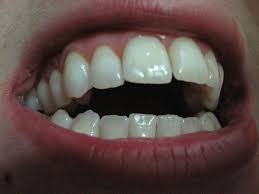 Teeth are not only beneficial in chewing. They also ensure that your tongue at the right place all the time. However, if your jaw is misaligned, you may suffer from a condition called sleep apnea. This condition arises because the tongue falls back often. Consequently, this blocks the breathing system and causes sleep apnea and other related medical complications.
Teeth are not only beneficial in chewing. They also ensure that your tongue at the right place all the time. However, if your jaw is misaligned, you may suffer from a condition called sleep apnea. This condition arises because the tongue falls back often. Consequently, this blocks the breathing system and causes sleep apnea and other related medical complications.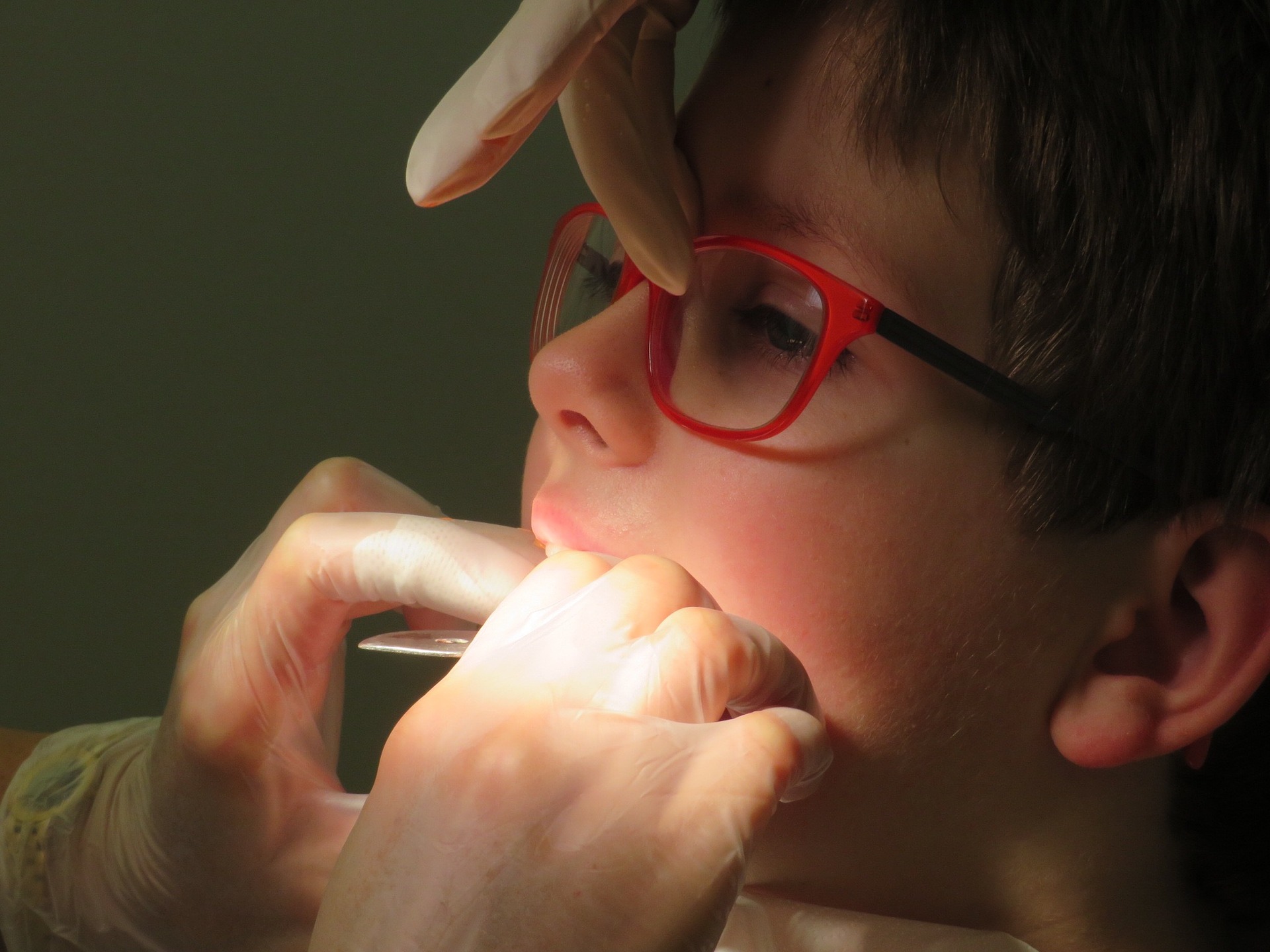

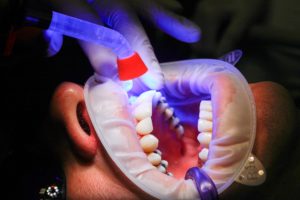
 Once you have found your ideal dentist, the next course of action is to validate their legitimacy. As what was mentioned earlier, dealing with fly by night operators is not a good idea. This is the reason why one must make sure that the
Once you have found your ideal dentist, the next course of action is to validate their legitimacy. As what was mentioned earlier, dealing with fly by night operators is not a good idea. This is the reason why one must make sure that the 
 One of the tricks to overcome your hunger is by eating foods that are filling and drinking beverages in between meals so that you can stay on track in your weight loss plan. Eat food with a lot of fiber, especially in the morning. Oatmeal is a good way to start the day. Another great thing to have for breakfast is lean protein. Add grapefruit to your diet, as well as other fruits and vegetables with a lot of fiber, nuts, spicy foods, and foods with the good fats. It also doesn’t hurt to enjoy a little dark chocolate every once in a while.
One of the tricks to overcome your hunger is by eating foods that are filling and drinking beverages in between meals so that you can stay on track in your weight loss plan. Eat food with a lot of fiber, especially in the morning. Oatmeal is a good way to start the day. Another great thing to have for breakfast is lean protein. Add grapefruit to your diet, as well as other fruits and vegetables with a lot of fiber, nuts, spicy foods, and foods with the good fats. It also doesn’t hurt to enjoy a little dark chocolate every once in a while.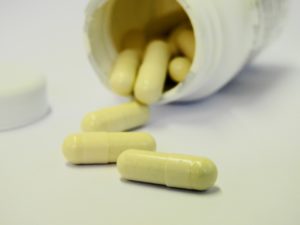 You can also add some suppressants to your diet to avoid overeating. There are many different kinds of suppressants out there. You can also take some natural suppressants such as green tea extracts, grapefruit essential oil, saffron extracts, spicy foods, and high fiber foods.…
You can also add some suppressants to your diet to avoid overeating. There are many different kinds of suppressants out there. You can also take some natural suppressants such as green tea extracts, grapefruit essential oil, saffron extracts, spicy foods, and high fiber foods.…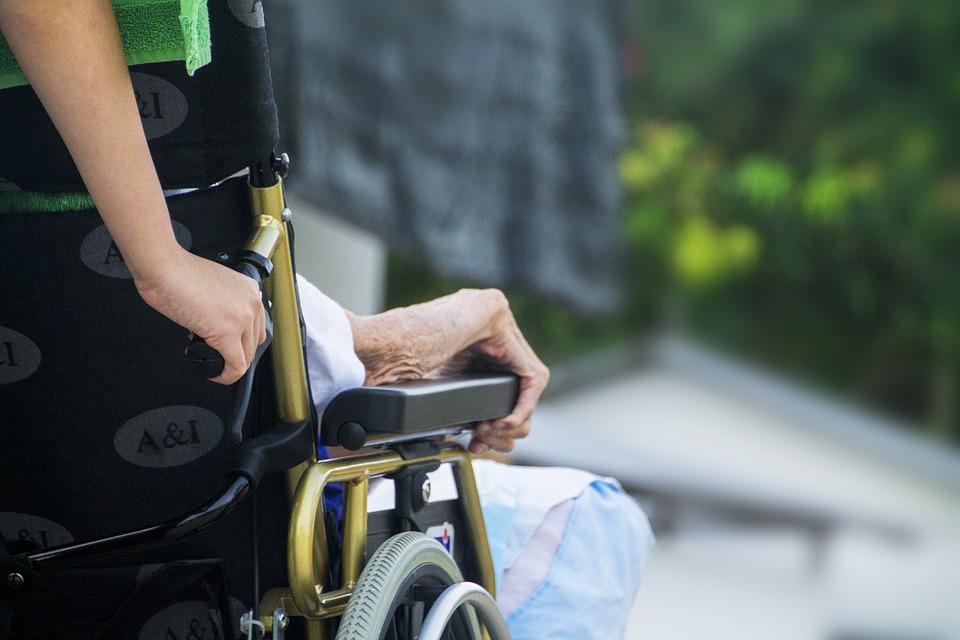
 A lot of people believe that accepting hospice is like giving up in life. However, the truth is that
A lot of people believe that accepting hospice is like giving up in life. However, the truth is that 
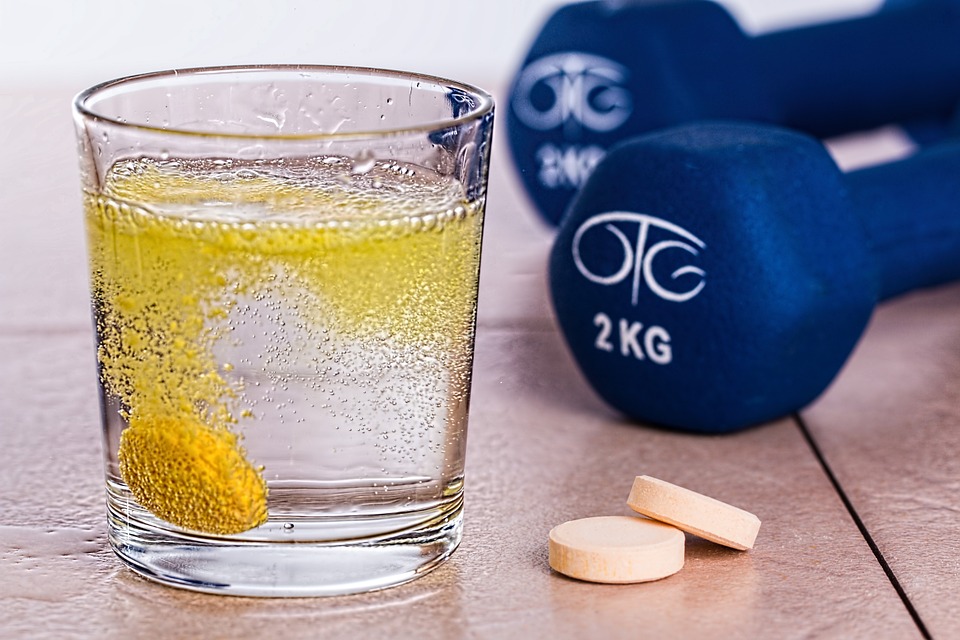
 As you get into any particular health store to purchase bodybuilding supplements, you will find several products. It is quite normal. However, the tough job is to figure out how to find the right supplements to meet your needs. For an individual facing rapid weight loss, it is vital that he or she gets the appropriate supplements. This is because it offers several benefits which act as a tool to accelerate your muscle growth. In fact, these supplements can even aid in better muscle development and better recovery.
As you get into any particular health store to purchase bodybuilding supplements, you will find several products. It is quite normal. However, the tough job is to figure out how to find the right supplements to meet your needs. For an individual facing rapid weight loss, it is vital that he or she gets the appropriate supplements. This is because it offers several benefits which act as a tool to accelerate your muscle growth. In fact, these supplements can even aid in better muscle development and better recovery.
